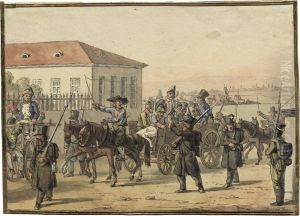Christian Gottlieb Geissler Paintings
Christian Gottlieb Geissler was a German artist known primarily for his work as an engraver and miniaturist during the 18th century. Born in 1729, Geissler's early life and artistic training are not thoroughly documented, but it is known that he became active in the field of engraving by the mid-18th century, a time when this art form was flourishing in Europe.
Geissler's works include a variety of subjects such as portraits, landscapes, and genre scenes, reflecting the tastes and interests of the European art market of the time. He worked in a detailed and precise manner, which was characteristic of engravers who sought to capture the nuances of light, shadow, and texture in their compositions.
Despite the lack of extensive records on his personal life, it is evident that Geissler's artistic contributions were part of the broader movement of printmaking and miniature painting that gained popularity throughout Europe. These art forms were not only essential for the dissemination of visual culture but also for documenting the faces and fashions of the era.
Geissler's death in 1815 marked the end of a long career that spanned a significant period in European art history, one that saw the transition from the Baroque to Neoclassicism and the beginnings of Romanticism. His engravings and miniatures remain as historical artifacts that offer insights into the artistic and cultural trends of his time.

